Discovering What Effects and Affects We Are Capable Of
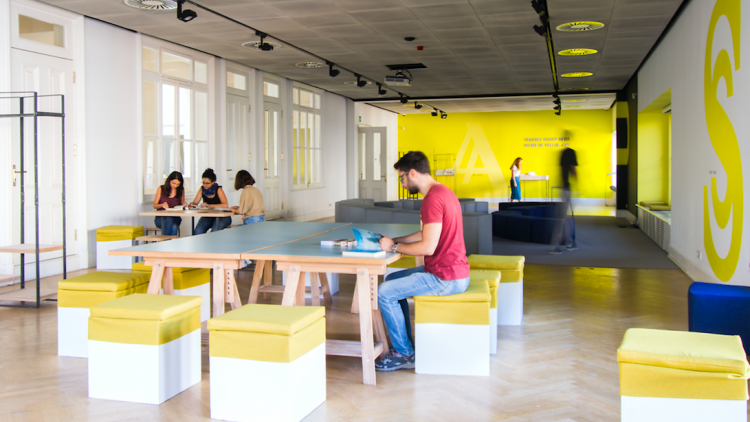
Un texto original de Gemma Medina, coordinadora de la asociación Arte Útil, comisaria y educadora.
Imagine an artistic project that is also a rainwater recycling system, or a live research project that aims to protect the wetland ecosystems of the Paraguay-Paraná Rivers. Your first reaction is probably to ask, “but is this art?”
Now, imagine artistic practices that abandon the traditional idea of art-as-object and move beyond the conventional boundaries of artistic language. What happens when art subverts its autonomy and its supposed neutrality in order to engage with everyday life? Or when artistic practices break out of the utopian realm they have been consigned to? What would happen if art and artistic methodologies were to leave the studio, gallery, and museum and start tackling contemporary problems, operating from different spheres, combining know-how and learning, enmeshed in collaborative processes, in real contexts and situations?
Perhaps your question would no longer be “is this art?” but rather, “what is the artistic component of this project?” You might want to know how to approach these artistic processes that immerse themselves in everyday life—in the world we live in—in order to raise questions about how we live and how we would like to live, reclaiming our capacity as political beings to imagine and bring about a possible society outside neoliberal frameworks. And above all, you might ask, “why is it important to share these practices”?
When art spills over into other fields and interacts with other—political, economic, and social—contexts, artistic thought and the creative act expand through collaborative processes and dialogue. This opens up a whole series of learning opportunities: non-hierarchical pedagogies for questioning and exchange blur the boundaries of the conventional idea of art, allowing us to unlearn imposed models and implement different ways of doing things. Other possibilities are activated, paving the way for a critical approach that questions the very idea of art and also challenges the underlying structures of society as a whole. In other words, it opens up new ways of seeing the world and new ways of thinking about art. Art then regains its potential for transgression and reflection and becomes a tool capable of bringing about social change.
However, even though these kinds of practices have existed throughout history—becoming particularly important in the 20th century, to the point of achieving recognition and visibility in some museums over the last decade—they are still not considered legitimate spaces. Because they do not revolve around the production of objects or reflect 19th-century discourses, and because they do not easily fit into the neoliberal framework, they are still pushed into the background and remain unknown to the general public.
Perhaps the difficulty lies in accepting the need to change the paradigm that defines contemporary art. This means revisiting art history and opening it up to multiple narratives. And it also means implementing educational processes around these practices. Because if we are to share and expand these reflective processes, inside and outside the cultural sphere, we cannot rely on the existing conventional models. Instead of looking for unifying, standardised answers, we must make room for new questions.
This requires a twofold commitment. On the one hand, a visible space and resources within the art institution, which must respect the nature of these practices and not attempt to turn them into exhibition objects. On the other hand, reaching out to audiences who are not familiar with art, beyond the museum walls, in neighbourhoods, citizen groups, hospitals, and communities who live in the wetlands, places where they can be useful.
Like Concomitentes, other projects and platforms are supporting and disseminating these practices, as well as carrying out important educational work. I would like to introduce three very different examples: Primal’s SHARE programme, Casa Río-Lab, and the Asociación de Arte Útil, of which I am a member. All three aim to expand artistic thinking into other spheres, to bring art’s power to question reality into the streets, and to activate other ways of doing things at the local, regional, and international levels.
Transdisciplinary group Primal believes that “creative activities are principally driven by relationship building, dialogue, and shared learning through experience and reflection.” Based in Iztacalco (Mexico City), Primal was founded by Paola Sánchez, Héctor Juárez, and Oscar Juárez in 2006. The group has become a catalyst for gatherings, action, and reflection to promote knowledge, dissemination, and conservation of the city’s natural and cultural legacies. To this end, in 2012 it launched a cultural programmed called SHARE: a platform-studio that hosts and provides space for a series of project-nodes connecting nature, art, the urban surroundings, the community, languages, food, and culture.
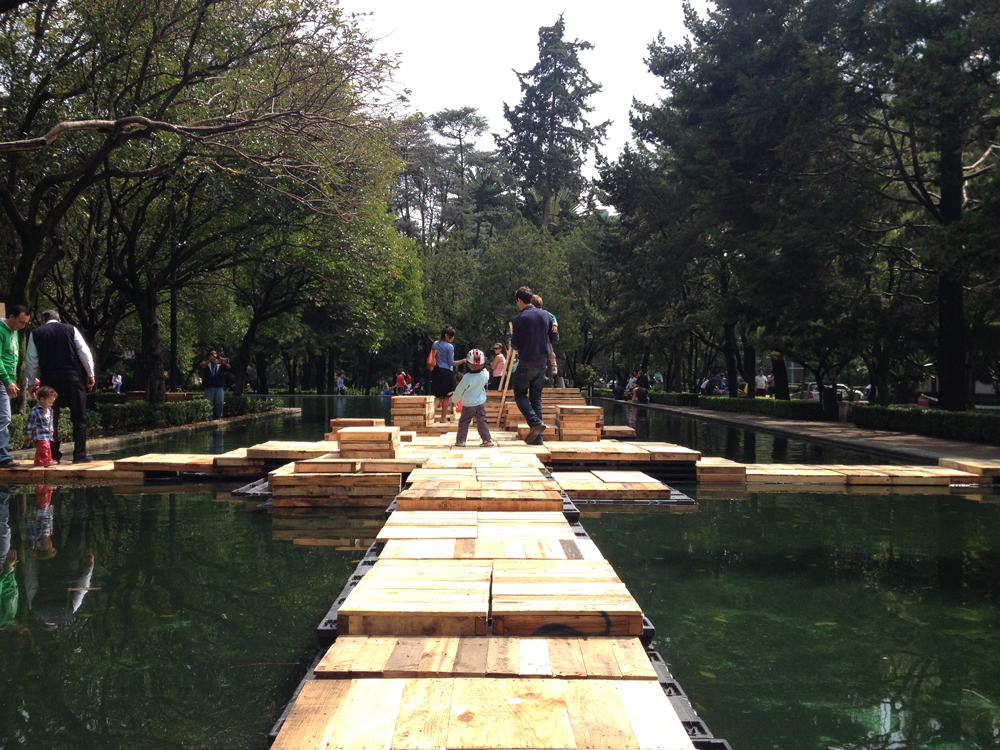
Primal’s studio provides SHARE with an infrastructure that includes several areas for rainwater and solar energy harvesting, farming, a botanical garden, a human-based archive and a digital vault. These facilities are usually associated with other disciplines, but SHARE puts them to use in the management of new kinds of knowledge through artistic residencies. These include audiovisual programmes and a “food performance” node, which is based around a community garden that offers local residents a weekly breakfast along with practical education on the cultural legacy, origin, processing, and consumption of food, as well as an open lab for artistic research (Food is Free). There is also an interdisciplinary library containing books, specimens, and seeds (Ferment), and an adjustable rainwater treatment system that supplies the community with drinking water through an artistic device made of re-purposed glass containers. This installation (called 754 mm) sets up a dialogue about water as a resource in the face of increasing problems with access to drinking water in various parts of Mexico City. The projects carried out by Primal and the artists in residence—and the learning that goes with them—are shared and disseminated at the studio and around the city through urban artistic interventions.

The next project, Casa Río Lab, is based in Punta Lara (Buenos Aires Province, Argentina), at the mouth of the Rio de la Plata estuary. This independent organisation brings socially engaged practices to the various communities that inhabit this vast catchment area, connecting aesthetics, environmental activism, and community organisation. Casa Río establishes collective learning processes through the core concepts of art, the environment, scientific knowledge, a sensitive approach, and local knowledge. A self-described centre for bioregional coordination, it co-creates and implements projects in conjunction with other organisations in the La Plata Basin in response to the threats they face from environmental and geopolitical conflicts and the ongoing encroachment of extractive systems.
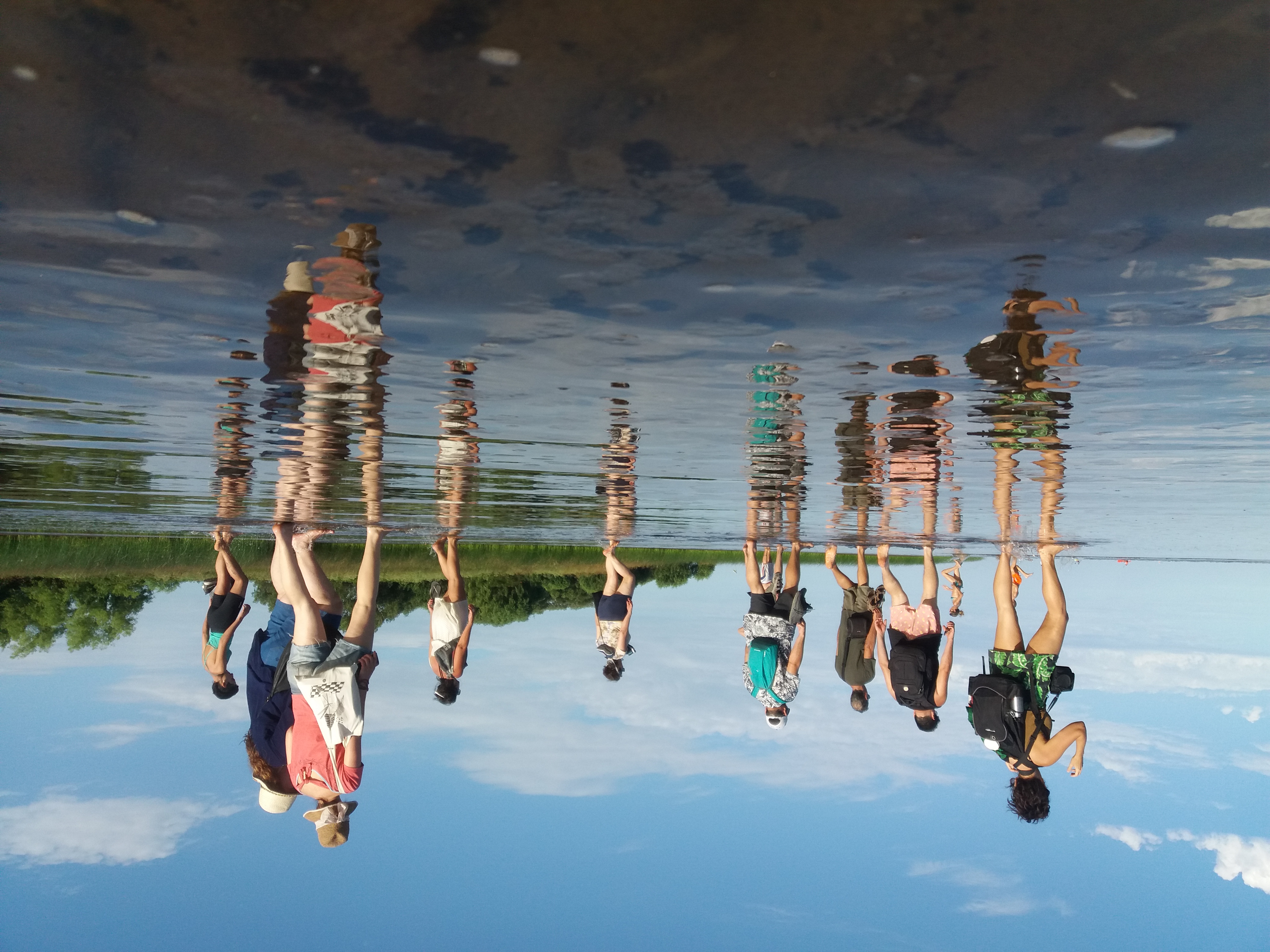
The Casa Río Lab team co-produces research involving multidisciplinary teams of professionals from various fields together with artists and residents of the affected areas. They pool their experiences and practices in order to build capacities to promote the joint development of the areas in question. This approach also allows them to experiment with new ways of thinking about the territory and new approaches to the design of public policies for coastal land use planning. Particularly when it comes to respecting existing ecosystems as well as the uses, habits, and wishes of the communities who inhabit them.
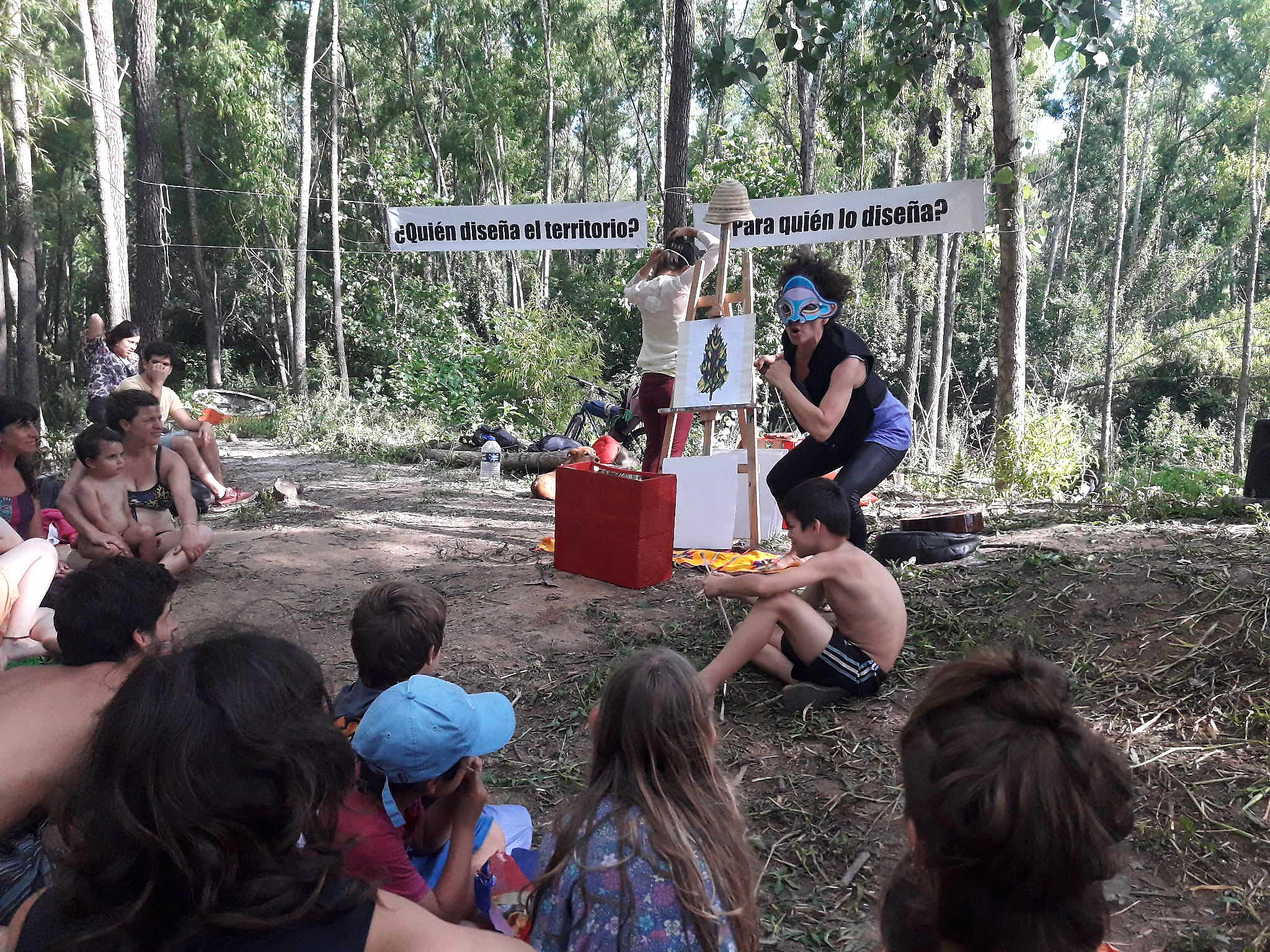
Casa Río uses the methodology of artistic action-research, with exercises based on observation, dialogue, reflection, and participatory research, as a basis for building collaborative networks. Exercises almost always begin by asking: Who designs the territories? And for whom are they designed? These questions allow us to begin exploring our relationship with the space we inhabit, and our role in changing it. As a research centre, Casa Río also has a space for artistic residencies and an archive focusing on socially engaged arts practices. This repository provides access to the archive of the ground-breaking art and environmental organisation Ala Plástica (1991-2016), which paved the way for social practice in Latin America. Today, Casa Río is working on two core initiatives: Collaboration Territories, a transnational network for the preservation of the Paraná Delta wetlands that uses the artistic research methodologies to produce “live” reports consisting of various kinds of contextual records showing the actual situation of these endangered areas; and Art on a Bioregional Scale, which organises exhibitions that draw attention to these practices within the art scene, setting up dialogues between related environmental art projects in different parts of the world, thus connecting the local and global problems affecting us.
As its name suggests, arte útil (which roughly translates as “useful art”) explores the use of art as a tool for social change, not just in the sphere of representation, but in the real world. The Asociación de Arte Útil is a para-institution made up of art institutions and individuals whose aim is to promote useful art, social practices, and the use of the archive in museums and beyond. The heart of the project is the Arte Útil archive, a nomad-device or open access online tool that continues to grow and evolve as new projects are received. It currently contains some 300 case studies, with specific examples of how artists/initiators and users/communities have used collective strategies to deal with local issues, from the late 19th century to the present, implementing alternative options to the structures that underpin society.
The archive was initially compiled in 2013 as the cornerstone of The Museum of Arte Útil exhibition (Van Abbemuseum, Eindhoven, The Netherlands). It was a tool that opened a gateway to a parallel history of art, mapping the course of these practices as an artistic movement through history. In this sense, it was a continuation of the research on the concept of “arte útil” that Cuban artist Tania Bruguera had been carrying out for a decade.
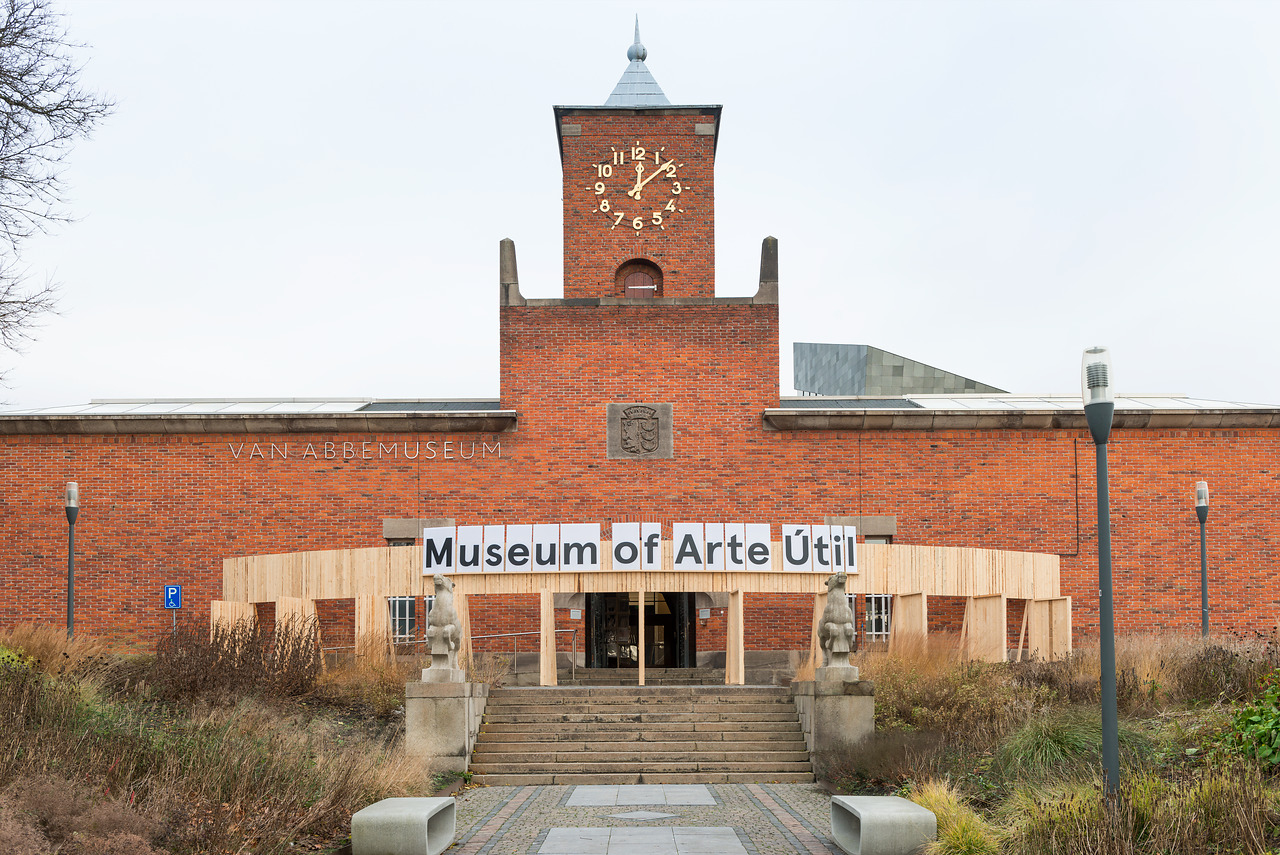
The research was organised collectively through an ongoing process of questions and discussions involving Tania Bruguera, several museums, a team of researchers (which I was part of), an “expert committee” (consisting of artists, curators, and theorists working with these practices in different continents), and an international call for projects. Our point of departure was a shared desire to question the role of art and of art institutions in the 21st century, to reflect on authorship and spectatorship, and to create a space in which to study and demonstrate art’s power to influence and change the reality around us.
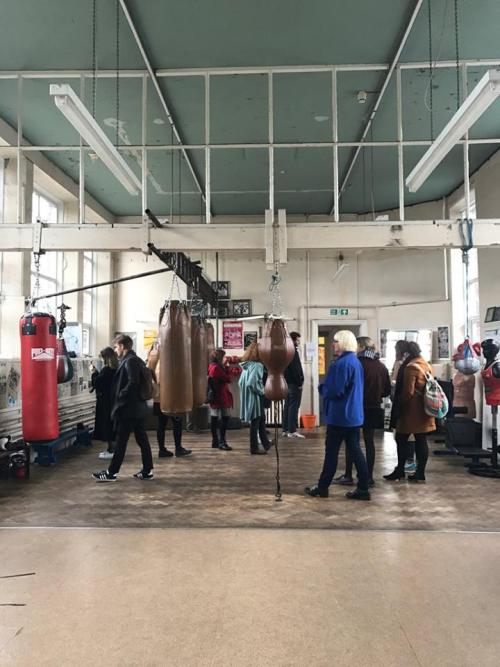
After the exhibition, it was clear that the archive must leave the museum in order to realise its use-potential. It had to open up and extend these questions to other voices. Its activation in other forums allows it to introduce these practices and their motivating power into unofficial spaces, where they can also serve as tools for artistic, social, and political action. Each activation of the archive has contributed to building a network of communities and users through the Asociación de Arte Útil. It is an archive and an exploration that is kept alive through the interactions generated by its members and by independent groups who appropriate the archive. The project Broadcasting the Archive (2015-2018), which I co-curated with Alessandra Saviotti, allowed us to share and emancipate the use of this repository of artistic strategies, in the cultural sphere and beyond, at various sites in Europe and North America. The idea was to generate a pedagogical methodology that implements the idea of useful art (or art as a tool) through activities, urban tours, workshops, and educational modules based on the use of the archive. In collaboration and dialogue with artists, museums, and local groups, we connected some of the most pressing problems in each place we visited with the strategies implemented by Arte Útil. We listened to the voices of community initiatives, we invited the artists/initiators of the case studies in the archive to join these conversations, and we visited local organisations working on the issues in question. However, these exchanges could not subsequently continue without the commitment of the organisations and individuals involved. In many cases, this highlighted the lack of institutional support and resources available. But just as arte útil expands autonomously, so does its potential to inspire.
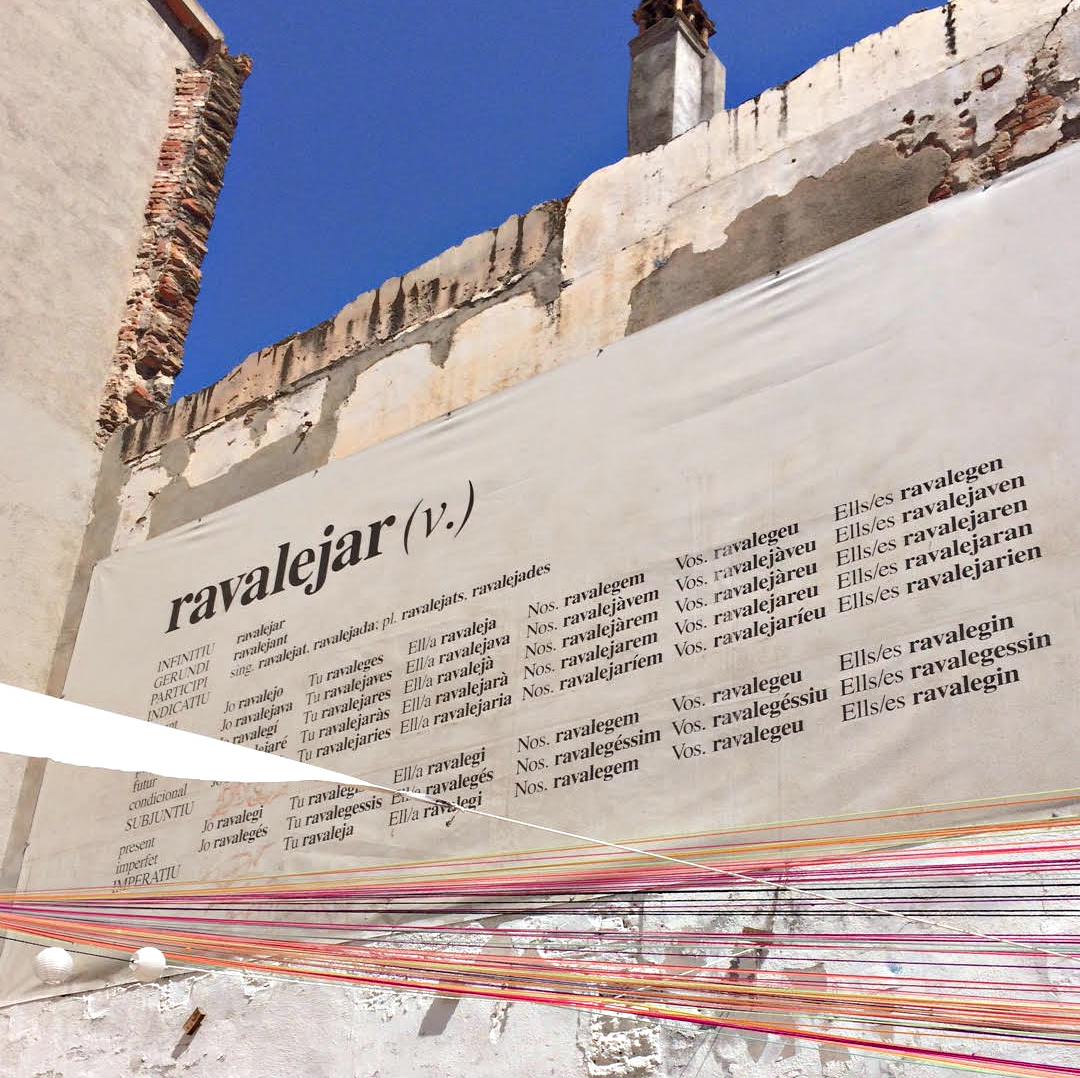
Examples such as the Offices of Useful Art (self-organised spaces based at museums or places such as community centres), the School of Arte Útil (an educational and artistic project that takes over museum galleries), and a series of direct incursions into the academic sphere in the form of workshops, seminars, and collaborations with university programmes (such as the international Masters Artist Educator-iMAE at ArtEZ, Arnhem, and the Uses of Art Lab at Liverpool John Moore University) are just some of the lines of use that have been developed so far by the Association itself or by autonomous groups. The archive has served as a catalyst for debate, a repository of strategies, and an educational and research tool, as well as an opportunity to ask questions. And it has been used by arts institutions, independent organisations, groups, and individuals from various fields. In a text reflecting on the theories of Deleuze and Guattari called “Elements for a Cartography of Belonging to a Group”, Peter Pál Pelbart writes: “We are, then, a degree of potentiality, of power, defined by our power to affect and to be affected. But we never know in advance what our power is, what affect we are capable of. It is always an experimental question.”[1] As these three examples show, socially engaged artistic practices provide space and time for coming together, for contact, learning, and interaction between different people and subjectivities. They generate effects and affects that activate the vital “degree of potentiality” that defines us. After a period in which we have had to learn to keep our distance, it is important to remember what we can do if we come together again. Because in our daily lives we forget that we are political beings with the ability to choose and to change our forms of life, and that art can be a versatile tool to facilitate this process.
[1] [1] Peter Pál Pelbart, “Elementos para una cartografía de lo grupal” in Lobo Suelto, 7 February 2021. (Translated into English from this Spanish translation of the Portuguese original as posted at: http://autonomies.org/2019/01/elements-for-a-cartography-of-belonging-to-a-group/#more-10017)
Para descargar el artículo en PDF presiona aquí.
--
Tania Bruguera, “Introduction to Arte Útil”, a conversation on Arte Útil, Immigrant Movement International, Corona, Queens, United States, April 23 2011. Video and transcript available at www.taniabruguera.com
Stephen Wright, Toward a Lexicon of Usership, Eindhoven, Van Abbemuseum, 2013. Available at www.museumarteutil.net
Asociación de Arte Útil: for more information about the archive and the association, see www.arte-util.org
Museum of Arte Útil exhibition at the Van Abbemuseum: more information at www.museumarteutil.net
Nouveaux Commanditaires at the Arte Útil archive: www.arte-util.org/projects/new-patrons
Broadcasting the Archive: all the activities and interactions can be found at www.broadcastingthearchive.tumblr.com/
Casa Rio Lab: for more information about the project, see www.casariolab.art and www.territorios.casariolab.art
Primal: for more information about the project, see www.primal.mx and www.local.mx/ciudad-de-mexico/arquitectura/primal-studio
